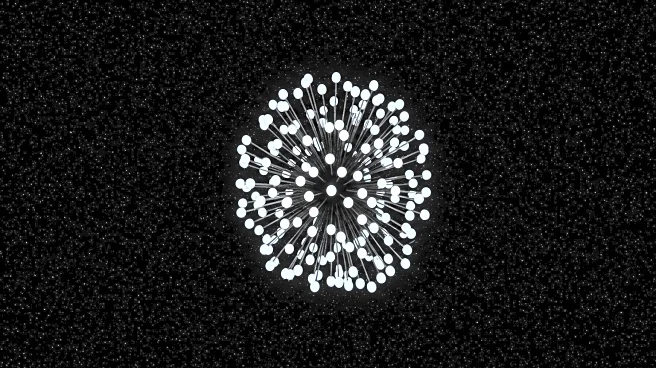What's Happening?
Researchers at the University of Missouri have identified 300 unusually bright objects in the universe using NASA's James Webb Space Telescope. These objects are considered candidate galaxies from the early universe, potentially challenging existing theories about galaxy formation. The study, published in The Astrophysical Journal, utilized infrared imaging to detect these objects, which appear brighter than expected. The researchers employed a technique called the dropout method to identify high-redshift galaxies, indicating their light has traveled vast distances. The findings suggest these objects could be early galaxies, prompting a reevaluation of current galaxy formation models.
Why It's Important?
The discovery of these candidate galaxies could significantly impact our understanding of the early universe and galaxy formation. If confirmed, these objects may require scientists to modify existing theories about how galaxies formed during the universe's infancy. This could lead to new insights into the processes that shaped the cosmos and the role of early galaxies in cosmic evolution. The research highlights the capabilities of the James Webb Space Telescope in uncovering distant cosmic phenomena, potentially paving the way for further discoveries that challenge established scientific paradigms.
What's Next?
The next step involves using spectroscopy to confirm the nature of these objects as early galaxies. Spectroscopy will provide detailed information about the galaxies' composition, age, and formation processes. Additional confirmations are necessary to determine whether these objects indeed challenge current theories. The researchers plan to continue their investigations, utilizing advanced techniques to explore the implications of their findings on galaxy formation models.













